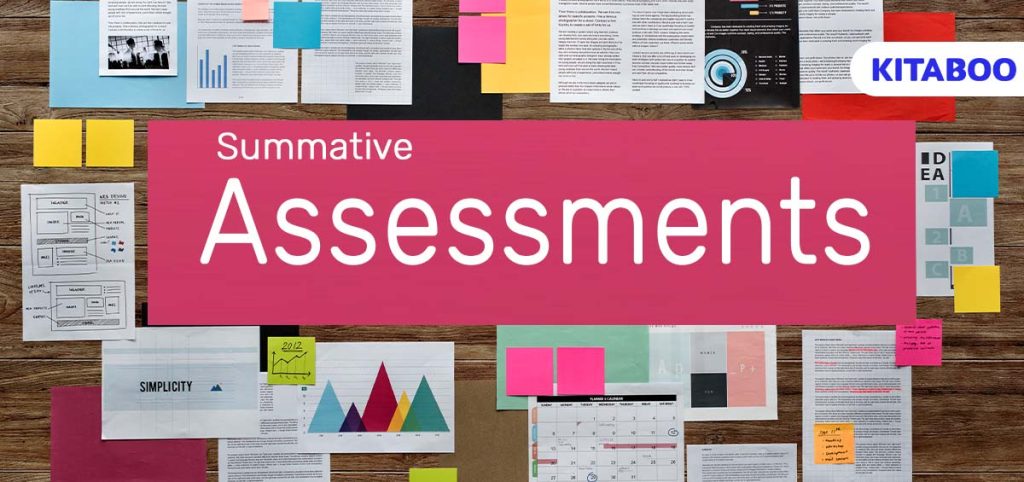
What are Summative Assessments?
Do you think we can take ownership of our education and learning journey without the pressure of assessments? The majority of us have spent sleepless nights trying to prepare for a crucial assessment the next day.
Anxiety, nervousness, restlessness, and lack of confidence are common phenomena before appearing for exams, but they often work as a constructive force to enhance our learning, performance, and growth.
Furthermore, assessments promote a deeper sense of learning in the student and allow teachers to evaluate the student’s learning needs, strengths, areas of improvement, and overall growth. Additionally, assessments also help teachers and educators identify the efficiency of their teaching methods and whether they align with the student’s learning goals.
Summative assessments are one such assessment technique that allows instructors to measure student learning. You are in the right place if you are an educator, teacher, curriculum designer, or student wanting to know more about summative assessments.
In this comprehensively curated guide, we will begin with some basics and continue to explore the concept of summative assessments deeply.
Table of Contents
- What Are Assessments?
- What Are Summative Assessments?
- Forms of Summative Assessment
- Difference between Summative Assessments and Formative Assessments
- Difference between Summative Assessments and Diagnostic Assessments
- Benefits of Summative Assessments
- Drawbacks of Summative Assessments
- Recommendations for Summative Assessments
- Wrapping Up
What Are Assessments?
Assessments can be understood as evaluative processes or tools used to measure the learning, growth, and systematic development of learners.
Assessments are employed in a variety of educational and professional settings to conduct thorough evaluations and enhance an individual’s improvement. There are six major types of assessment. They are:
- Formative Assessments
- Summative Assessments
- Diagnostic Assessments
- Norm-Referenced Assessments
- Criterion-Referenced Assessments
- Benchmark Assessments
What Are Summative Assessments?
Summative assessments are conducted at the end of a learning module or training program to assess the student’s proficiency, skills, knowledge, and growth. These assessments are strategically designed to evaluate both the learning of the students as well as the effectiveness of the program.
The result of the student’s performance is evaluated against a standard or pre-defined benchmark to ensure the learners have successfully met the learning objectives.
Forms of Summative Assessment
The summative assessment can be implemented through a variety of ways and techniques. Educators are now incorporating creative and engaging techniques in assessments offered by online platforms like KITABOO to keep the students positively engaged.
Some of the common forms of summative assessment are:
- Objective/subjective question written examination
- Individual or group project
- Viva/interview or other oral tests
- Creative portfolio
- Presentations
- Essay or paper submissions
Difference between Summative Assessments and Formative Assessments
Formative and summative assessments allow educators and teachers to identify the learning outcomes and potential of the students. However, the formative assessment is designed to focus on the learning gaps of the students and how the gaps can be closed.
On the other hand, summative assessments focus on overall learning and proficiency.
Consequently, unlike summative assessments, formative assessments do not require a systematic and predetermined evaluation tool and technique. A simple conversation with the learners can be made into a formative assessment, which allows the instructor to identify a student’s problems, misconceptions, weaknesses, and more.
Summative assessments are formally graded, and the learners receive the final score. This allows them to self-analyze their strengths and weaknesses and address them accordingly. Summative assessments are usually employed at the end of a learning module, whereas formative assessments are continual and ongoing.
Difference between Summative Assessments and Diagnostic Assessments
There is one major difference between summative assessment and diagnostic assessment. The summative assessment is performed at the end of the learning module, whereas the diagnostic assessment is performed before starting a learning module.
Diagnostic assessment allows teachers and instructors to identify the learning gaps and help them determine their teaching steps accordingly.
Diagnostic assessments are not very comprehensive and are simply designed to provide the teachers with an overview of students’ learning capabilities and existing gaps. Some of the common forms of diagnostic assessment are oral interviews, pop quizzes, anecdotal records, questionnaires, surveys, problem-solving tasks, etc.
Benefits of Summative Assessments
Some of the key advantages of summative assessments are:
- A clear and effective measurement of learning outcomes
- Promotes accountability both for students and teachers
- Allows teachers to make data-driven and informed decisions
- Fosters a holistic and comprehensive learning environment
- Inculcates a sense of accomplishment in students
- Motivates students to promote self-growth and learning
- Prepare students for real-world situations and challenges
- Generates systemized feedback for improvement and adjustments
- Promotes teachers to maintain consistent educational quality and standards
- Enhances student retention through focused revisions and reviews
Drawbacks of Summative Assessments
Along with the various advantages of summative assessments, there are also some drawbacks that should not be ignored. A thorough understanding of the drawbacks can allow educators to eliminate them and modify their teaching approach accordingly.
Some of the major drawbacks of summative assessments are:
- Places students and learners in a high-pressure environment
- Lack of personalized learning pace and environment
- Encourages students to score marks and neglect in-depth learning
- Rely on a singular performance, disregarding gradual growth over time
- Leads students and learners to take up test anxiety
- Limited and narrow range of assessment methods
Recommendations for Summative Assessments
Teachers need to strike the right balance between motivating students and instructing students to achieve their learning goals. Summative assessments should not pressure students but rather foster a positive learning environment.
Here are some recommendations teachers and instructions can keep in mind while conducting summative assessments and teaching students.
- Foster a positive competitive spirit in the students rather than the sole focus on scoring good marks.
- Incorporate interactive learning features offered by platforms like KITABOO to keep students motivated.
- Provide students ample time to prepare for the assessment with a clear and open mind.
- Provide clear and concise instructions to students on how to attempt the summative assessment.
- Incorporate real-world concepts in the assessment to bridge the gap between theoretical and practical understanding.
- Follow clear rubrics while marking and grading the students.
- Avoid ambiguous and tricky questions that can lead to misinterpretation.
Wrapping Up
It is safe to say that summative assessments can prove to be highly beneficial in a student’s learning journey if implemented effectively and efficiently. However, with time, it is also important to further develop the summative assessment standards by introducing new technologies and techniques.
In the current digital landscape, there are numerous tools, like machine learning, artificial intelligence, virtual reality, etc., to make summative assessments more creative and comprehensive.
If you need help with the same, you can reach out to us at KITABOO. We are known globally for catering to customers’ digital educational needs. You can benefit from all our assessment services and greatly enhance your students’ learning experience.
Contact our expert team now and get started!
To know more, please write to us at contact@kitaboo.com
Suggested Reads:
Discover how a mobile-first training platform can help your organization.
Kitaboo is a cloud-based platform to create, deliver & track mobile-first interactive training content.







